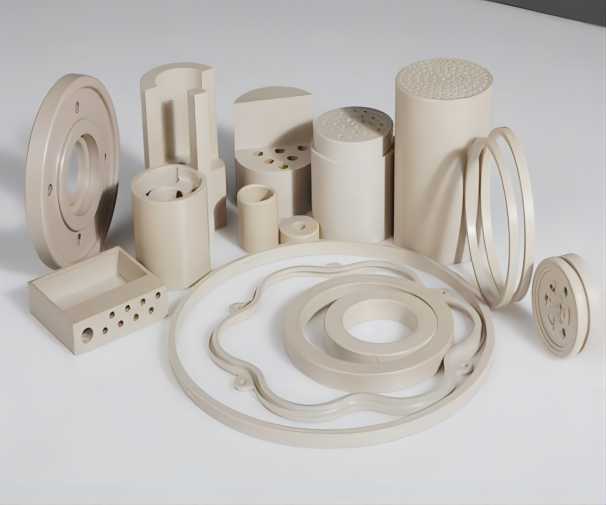
Privacy statement: Your privacy is very important to Us. Our company promises not to disclose your personal information to any external company with out your explicit permission.
Have you ever wondered why PEEK materials are brittle? In fact, this is due to two main aspects: mechanical properties and chemical stability.
Firstly, we need to understand what "brittleness" is. In materials science, brittleness is the tendency of a material to rupture upon impact or stretching.
From a chemical stability perspective, PEEK is slightly less chemically stable than some other plastic materials. Although it is resistant to most organic solvents and acids at high temperatures and pressures, its chemical resistance may be lacking in some specific environments.
Through some simple methods, we can improve the brittleness of PEEK material and enhance its toughness and impact resistance. For example, mixing PEEK materials with glass fibres or other reinforcements can significantly improve their strength and impact resistance. Such reinforced PEEK materials are commonly used in the manufacture of high-performance components and assemblies in areas such as aerospace, automotive and medical devices, and through processing processes such as injection moulding, extrusion and 3D printing, we can further optimise the shape and size of PEEK materials for a wide range of products. These processing methods not only improve their processing efficiency, but also optimise their properties by fine-tuning parameters.
In fact, the brittleness of PEEK materials is closely related to their molecular structure and aggregate state structure. In terms of molecular structure, PEEK materials have rigid aromatic chain segments and flexible ether bonds. This molecular structure makes it show certain rigidity and brittleness at room temperature. In terms of the aggregate state structure, PEEK materials have a high degree of crystallinity, which also contributes to their rigidity and brittleness. In order to improve this phenomenon, several researchers and manufacturers are actively exploring different approaches. For example, the toughness of PEEK materials can be increased by altering their molecular structure to introduce more flexible chain segments or cross-linked structures. In addition, the toughness of PEEK materials can be increased by improving the processing or adding toughening agents.
In summary, although the PEEK material has a certain degree of brittleness, but this does not mean that it is not ideal in all applications. By understanding the causes of its brittleness and taking appropriate measures (such as reinforcing, toughening, or changing processing techniques), we can overcome these shortcomings and take full advantage of its excellent mechanical properties and thermal stability. Therefore, if you are considering the use of PEEK materials, it is recommended that you make a thorough evaluation based on your specific application needs and environmental conditions.

November 17, 2024
November 16, 2024
August 27, 2021
August 26, 2021
PEEK ball is a special type of ball made of polyether ether ketone (PEEK), which has excellent chemical stability, abrasion resistance, and high temperature resistance.PEEK ball is widely used in...
PVDF Application Areas Different models of PVDF products are suitable for different application scenarios. According to application fields, PVDF can be divided into conventional grade products and...
Application Performance Advantages of MC nylon MC nylon is a new type of engineering plastics, due to its outstanding comprehensive performance, so that its status in engineering plastics is rapidly...
Types of nylon: 1. Nylon - 6 (PA6) Nylon -6, also known as polyamide -6, that is, polycaprolactam. Translucent or opaque opalescent resin. 2. Nylon - 66 (PA66) Nylon-66, also known as polyamide-66,...
Email to this supplier
November 17, 2024
November 16, 2024
August 27, 2021
August 26, 2021

Privacy statement: Your privacy is very important to Us. Our company promises not to disclose your personal information to any external company with out your explicit permission.

Fill in more information so that we can get in touch with you faster
Privacy statement: Your privacy is very important to Us. Our company promises not to disclose your personal information to any external company with out your explicit permission.